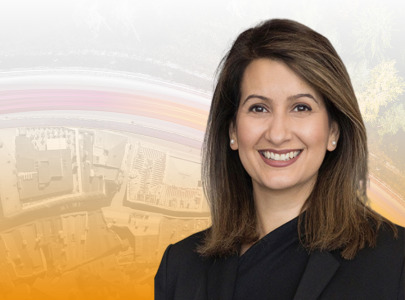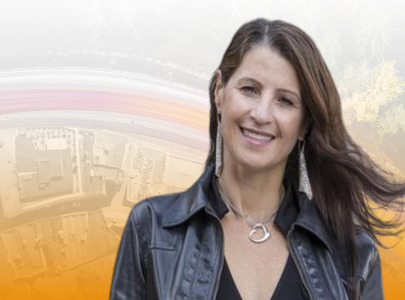Embracing the dark side: bifacial solar panels in the Middle East

Bracewell's Tom Swarbrick and Andrej Kormuth have a look at the potential for bifacial solar in the Middle East, referencing the 800MW Al-Kharsaah PV IPP in Qatar which set a world record tariff for the production of unsubsidised solar energy
Bifacial panels have been ‘The Next Big Thing’ for a while now. They collect solar energy on both sides; directly from the sun and reflected upwards from the ground. Manufacturers promise higher production for a modest increase in capital expenditure. This should be a compelling proposition for an industry experiencing unprecedented pricing pressures.
But the technology has been slow to gain traction. The additional variables affecting the production of the underside cause difficulties in calculating the precise increase to energy yield. For example, grass reflects sunlight better than tarmac. This is a problem for developers and lenders, who require certainty of input to provide a predictable revenue stream.
The good news for the Middle East is that sand is good at reflecting sunlight, which presents a stronger case for using bifacial technology. The Al-Kharsaah 800 MW solar IPP in Qatar, developed by Japan’s Marubeni and France’s Total, reached financial close in July of this year. The project will utilise 2 million bifacial solar panels and will reach full capacity ahead of the 2022 football World Cup. The technology has also been earmarked for other utility-scale projects in the region. This could be the tipping point for bifacial panels.
Two Sides to the Story
Bifacial solar modules collect solar energy on both sides of the panel. Whereas traditional solar photovoltaic modules absorb solar cells directly from the sun, the underside of a bifacial module also absorbs sunlight reflected upwards from the ground.
The key advantage of using bifacial panels is the ‘bifacial gain’: the increase to energy production by utilising the second side of the module. The cost differential between a traditional panel and a bifacial panel is marginal, although other costs may be higher too (such as installation). However, there are also cost efficiencies. The same balance of plant will deliver greater value supporting two-sided modules, rather than one. For these reasons, even a moderate uplift in energy generation should justify use of the technology. This is particularly attractive in the Middle East solar market, where pricing pressure is greater than anywhere else in the world.
The main drawback of bifacial modules, and the key reason for investor hesitancy in embracing the technology, is that the industry is still getting to grips with how best to model their performance. The particular difficulty is that the production of the underside of the panels is subject to variables that do not apply to the topside: these include the capacity of the ground to reflect sunlight, increased soiling and the effect of shadows from racking and other components.
The capacity to reflect sunlight is ‘albedo’, which is the proportion of sunlight hitting the ground which is reflected, rather than absorbed. Albedo depends largely on the underlying terrain. Snow reflects sunlight very well and has a high albedo, whereas soil has a relatively low albedo. Sand is among the more favourable options for locating plants with bifacial technology. However, the limited historical data for bifacial performance has shown significant variation, even when accounting for albedo. The variability can arise due to factors such as position of the sun and atmospheric changes, which can affect the same site in different ways from year to year. So how has the industry been able to reach a point where the largest solar projects in the world can use these panels?
A key factor in selecting components for use in a project is track record. It is a universal feature of requests for proposals in the Middle East, regardless of the technology, that developers must provide evidence of successful deployment in projects elsewhere. Authorities generally do not like to take a risk on nascent technologies; lenders are even less inclined to roll the dice. The issue this creates for manufacturers of new technologies is clear: if they do not have a track record, how can they establish one?
The response from the industry has been to engage in extensive data collection and analysis. Manufacturers, consultants and other industry participants have constructed testbeds in Europe, Japan and the U.S. to establish the extent to which panels can deliver the theoretical performance levels in the field.
This research is supplemented by long term in-country (or even at-site) measurement and testing, to take account of local conditions. In Qatar, for example, the Qatar Environment and Energy Research Institute has performed testing of bifacial models over several years, building an extensive database of findings to support use of the technology within the country. This data, when correlated with information from satellite databases, goes a long way towards building confidence in the technology.
Emerging from the Shadows
The industry’s collective efforts have secured several highly influential supporters. EBRD has funded the use of bifacials in projects in Egypt and is a strong advocate for the technology. The Japan Bank for International Cooperation (JBIC) and Mizuho were the lenders on Al-Kharsaah PV IPP. Their approval indicates a high level of trust amongst lenders.
It may be the case, for now at least, that the lenders are not giving full value to the promised bifacial gain. In reaching a lending decision, they may assume a discount to the promised increase in production. However, this will change as those large, utility-scale projects which have incorporated the technology generate an abundance of operational data. It feels like bifacial panels are ready for their day in the sun.
Authors: Tom Swarbrick (Partner, Construction), Andrej Kormuth (Partner, Projects)
Bracewell LLP acted as lead international counsel to an international investment consortium, comprising Siraj Energy, Marubeni Corporation and Total Solar, in the development and implementation of Al-Kharsaah, the first utility-scale renewables independent power project in Qatar. The transaction reached financial close on 22 July 2020.
Energy & Utilities - Middle East and Africa Market Outlook Report 2024.
This must-have report for industry players offers a thorough understanding of the latest developments, challenges, and opportunities in the region, supported by data, analysis, and expert insights.








